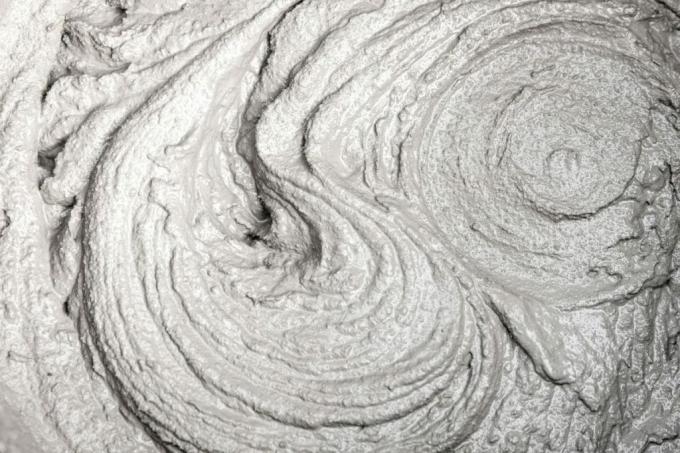
table of contents
- Loose or Solid?
- Joint sand, joint chippings, rock flour
- Instructions for loose grouting
- Grout
- Instructions for firmly grouting without adding water
- Instructions for firm grouting with the addition of water
- frequently asked Questions
A terrace should not only look good, but also last a long time. What do do-it-yourselfers have to consider if they want to grout their terrace slabs? What grouting materials are there? Which grout fits which purpose?
In a nutshell
- Grouting of terrace slabs prevents slipping - grout reduced
- Weed formation between the panels and protects against insect infestation
Requires stability and elasticity - Joint sand, joint mortar and joint chippings are available for loose and solid grouting
Loose or Solid?
If you want to joint terrace slabs, you can choose between loose and fixed connections.
Loose grouting
Terrace slabs with narrow gaps can be jointed loosely. The following joint materials are offered:
- Joint sand
- Rock flour
- Joint chippings
The advantages are apparent. The loose grout balances out tensions well. Especially in winter at low temperatures, the elasticity protects the terrace slabs from damage. However, loose grout is quickly washed out when it rains. It needs to be replenished regularly.

Note: As a guideline, the wider the gaps, the coarser the joint material should be.
Firm grouting
For firm grouting of the terrace slabs, elastic grout is available in various qualities. The products are available ready-mixed in every hardware store.
Solid joint material insulates better than loose joint material and in this way protects against damage caused by the cold. The water drainage is guaranteed with modern materials. Modern solid joint products combine elasticity and stability. Rigid connections of terrace or pavement slabs through concrete, which were common in the past, are no longer implemented today. They prevented expansion and caused cracks.
Joint sand, joint chippings, rock flour
Fine joint sand with a grain size of 0.1 to 0.5 millimeters is the first choice, especially for narrow gaps. The joint depth should be at least four centimeters to give the panels the necessary strength. Rock flour consists of ground rock, for example granite. Just like joint sand, it can be brought in perfectly and helps to contain the growth of weeds. The permeability is not impaired by the sand, so that the water drainage is ensured.
Note: Mix joint sand with fine grit to increase the strength of the loosely jointed panels.
Instructions for loose grouting
Material:
- Joint sand, rock flour or joint chippings
- Vibrator
- broom
Instructions:
- Sweep the patio slabs thoroughly.
- Spread the grout on the panels.
- Carefully sweep the grout into the spaces. Repeat the process until all the joints are filled.
- Clean the patio slabs with a soft broom.
- Consolidate the flooring with a vibrator.
- Refill grout again.

Tip: Make sure the grout doesn't mix with organic matter. These would be the basis for the settlement of weed form.
Grout
Grout is suitable for grouting larger joint widths between patio slabs. The self-curing materials remain elastic. They are available in different qualities. Grout products are offered ready-mixed in specialist stores. Alternatively, you can mix sand with a binding agent and water. Professional grouts do not require the addition of water. This way, contamination on the plates can be excluded. The joints are stable and yet remain water-permeable.
Instructions for firmly grouting without adding water
Material:
- Grout mixture for dry application
- Vibrator
- broom
Instructions:
- Thoroughly sweep the laid terrace slabs.
- Mix the grout well once.
- Spread the grout on the panels.
- Thoroughly sweep the mass into all the grout until well filled.
- Clean the plates.
- Solidify the surface with a vibrator.
- Fill in the gaps again with grout.
Instructions for firm grouting with the addition of water
Material:
- Grout mix water
- Garden hose
- Rubber lip
- Trowel
- broom

Instructions:
- Thoroughly clean the patio slabs and the spaces between them.
- Spray the panels and grout with water.
- Spread the ready-to-use grout on the flooring.
- Moisten the grout with a jet of water.
- Bring the even mass into the joints with a rubber squeegee.
- After working in the grout, lightly spray the area with water.
- Remove excess material from the panels with a soft broom.
- Sweep the area again after 45 minutes.
- Clean the tool.
- Protect the terrace from dirt with a film. It should not be entered for a week.
frequently asked Questions
Joint strengtheners for terraces and sidewalks are available in hardware stores. These are liquids that are applied to the joints filled with joint sand. They increase the strength of the joints, protect against leaching and prevent weeds from growing.
Particularly high-quality ceramic tiles are often laid without joints. This technique can only be used for dimensionally accurate panels. It requires extensive specialist knowledge. Cracks and damage to the edges cannot be ruled out.
When grouting loosely with sand or grit, there is no risk of permanent soiling of the panels. If you joint the terrace slabs with grout, contamination cannot be completely ruled out. We recommend creating a test area to check that the residues can be completely removed.



